
Natural Material Guide
Your go-to resource for a selection of natural, eco-friendly materials. We’ve curated these materials to help you create healthier, more sustainable spaces. Explore, get inspired, and feel free to reach out for more information.
Plaster & Paint
-
A Sustainable and Healthy Building Material
Clay plaster is a natural building material that has been used for centuries. Made from earth, sand, and fibers, such as straw, it offers a sustainable alternative to conventional wall finishes. Its low energy cost of production and abundant raw materials, that can be sourced locally almost everywhere in the world, make it an excellent choice for reducing environmental impact. Unlike cement-based products, clay plaster is biodegradable and produces minimal waste, contributing to a circular economy. Additionally, its durability allows for long-lasting, breathable walls.
Beyond its environmental benefits, clay plaster promotes a healthier indoor climate. Free from harmful chemicals and synthetic additives, it is non-toxic and hypoallergenic.
Clay Plaster has natural humidity-regulating properties, that improve air quality by absorbing excess moisture and releasing it when needed, reducing the risk of mold and allergens.
The earthy composition also helps to dampen sound and create a warm, comfortable ambiance, enhancing living spaces with a natural aesthetic.
On the downside, clay plaster might need some maintenance over time, especially when getting in contact with water (not water-proof). However, the maintaining process is fast and easy and can be done DIY. -
A Durable and Eco-Friendly Wall Finish
Limestone plaster is a versatile and sustainable building material, known for its natural elegance and durability. Made primarily from limestone, sand, and water, it has a low environmental footprint, especially when sourced locally. Compared to synthetic alternatives, limestone plaster requires less energy for production, emits fewer pollutants, and can be recycled or naturally decomposed, reducing waste.
Its long lifespan and resistance to weathering make it a low-maintenance, high-performance choice for both interior and exterior surfaces.Beyond its sustainability, limestone plaster contributes to a healthier indoor environment. It is free from toxic substances and helps regulate indoor air quality by absorbing excess humidity and allowing walls to breathe. Additionally, limestone’s high pH levels offer antibacterial & antifungal properties, creating a more hygienic living space.
-
A Durable and Eco-Friendly Wall Solution
Silicate plaster is a high-performance, mineral-based building material known for its durability, breathability, and sustainability. Made primarily from potassium silicate (water glass), sand, and mineral fillers, it has a low environmental impact due to its natural composition and long lifespan. Unlike synthetic plasters, silicate plaster does not emit harmful VOCs and requires minimal maintenance, reducing waste over time. Its strong adhesion and weather resistance make it ideal for exterior and interior applications, ensuring a long-lasting, energy-efficient solution.
In addition to its sustainability, silicate plaster contributes to a healthier indoor environment. It is non-toxic, free from harmful chemicals, and helps regulate indoor humidity by allowing walls to breathe naturally, preventing mold and mildew growth. Its antistatic properties repel dust and pollutants, promoting cleaner air quality. Thanks to its alkaline nature, silicate plaster also has natural antibacterial and antifungal qualities, making it an excellent choice for homes, schools, and healthcare facilities.
-
A Timeless, Sustainable, and Luxurious Plaster
Tadelakt is a traditional Moroccan lime plaster renowned for its water resistance, durability, and natural beauty. Made from lime, natural pigments, and soap, it is an eco-friendly alternative to synthetic sealants and coatings. Its low-energy production process and biodegradable composition make it a sustainable choice for interior and exterior surfaces. Unlike cement-based materials, Tadelakt allows for seamless, long-lasting finishes, reducing the need for replacements and minimizing environmental impact.
Beyond its sustainability, Tadelakt enhances indoor comfort and health. Free from toxic chemicals and synthetic additives, it is hypoallergenic and breathable, helping to regulate indoor humidity and prevent mold growth. Its alkaline properties make it naturally antibacterial and antifungal, making it ideal for bathrooms, kitchens, and wellness spaces. The smooth, polished surface also feels soft and warm to the touch, creating a luxurious, organic atmosphere in any setting.
The only downside might be its work-intense application-process that takes time and manpower, which also makes it. That intense process also makes it a rather expensive material. -
Versatile & User-Friendly Mineral Blends
Mineral-based products combine different natural elements to enhance functionality and ease of use. Take fine clay plaster paint, for example—a unique blend of clay, silicate, and minerals like marble.
These innovative products are designed to be DIY-friendly and highly versatile. They can be used to add texture, depth, and even color to clay paints. A great example is marble flour, a natural mineral additive that gives clay paint a crisp, white finish.
One drawback is that they usually have organic additives - chemical compounds derived from carbon-based (organic) sources. These additives, even if used in very small amounts (usually >5%), can have negative health effects. VOC is an example.
-
A Natural and Breathable Wall Finish
Clay paint is an eco-friendly, mineral-based paint that provides a healthy and sustainable alternative to conventional wall coatings. Made from natural clay, minerals, and earth pigments, it has a low environmental impact, requiring minimal processing and producing no harmful emissions. Its biodegradable composition makes it a zero-waste option, aligning with sustainable building practices. Unlike synthetic paints, clay paint contains no VOCs (volatile organic compounds), ensuring clean indoor air quality and a safer living environment.
In addition to its sustainability, clay paint enhances indoor comfort. Its high breathability allows walls to regulate humidity by absorbing and releasing moisture, reducing condensation and the risk of mold growth. This makes it an excellent choice for bedrooms, living spaces, and wellness areas. With its soft, matte texture and natural pigments, clay paint creates a warm, inviting ambiance, offering a rich, earthy aesthetic that complements both modern and traditional interiors.
-
A Breathable and Sustainable Mineral Finish
Limestone paint is a natural, eco-friendly wall coating made from finely ground limestone, mineral pigments, and water. As a low-impact, sustainable alternative to synthetic paints, it requires minimal energy for production, contains no harmful VOCs (volatile organic compounds), and is fully biodegradable. Its long-lasting durability means fewer repaints over time, reducing both waste and environmental impact.
Beyond its sustainability, limestone paint contributes to a healthier indoor climate. Its high breathability allows walls to absorb and release moisture, helping to regulate humidity and prevent mold and mildew growth. Additionally, its alkaline properties create a naturally antibacterial surface, improving indoor air quality. The mineral-based pigments provide a rich, natural matte finish.
-
A Durable and Breathable Mineral Coating
Silicate paint is a high-performance, eco-friendly wall finish made from potassium silicate (water glass), mineral pigments, and natural fillers. Unlike synthetic paints, it forms a permanent bond with mineral surfaces, ensuring exceptional durability and longevity. Its low-energy production and non-toxic composition make it a sustainable choice, with no VOC emissions and minimal environmental impact.
In addition to its sustainability, silicate paint enhances indoor air quality and living comfort. It is highly breathable, which helps prevent condensation, mold, and mildew growth. Its alkaline properties naturally repel bacteria and fungi, creating a hygienic and allergy-friendly environment.
One disadvantage is that it can only be applied on mineral surfaces, since it forms a permanent bond with them.

Clay Plaster
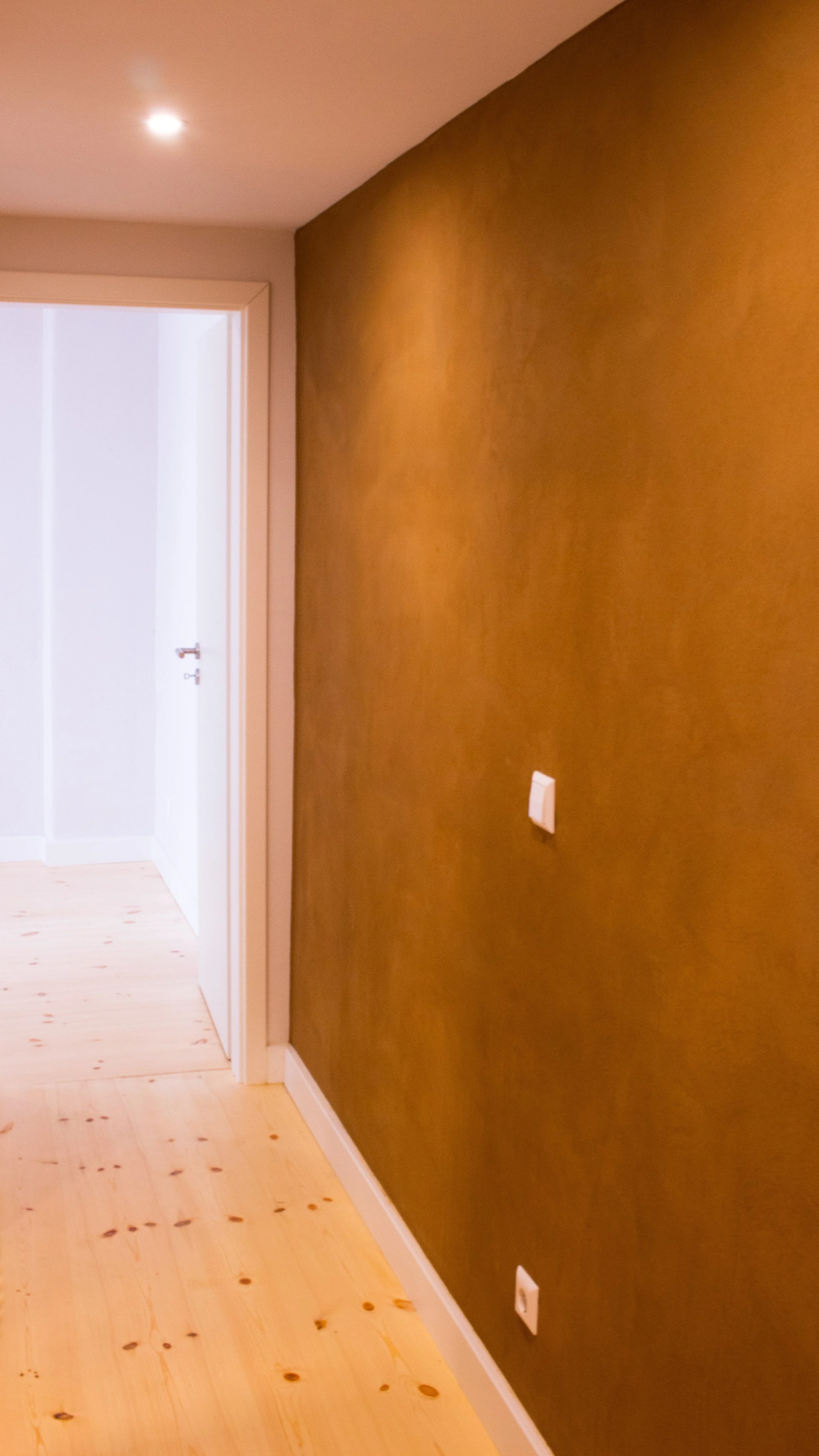
"Natural Nest" Clay Plaster Wall
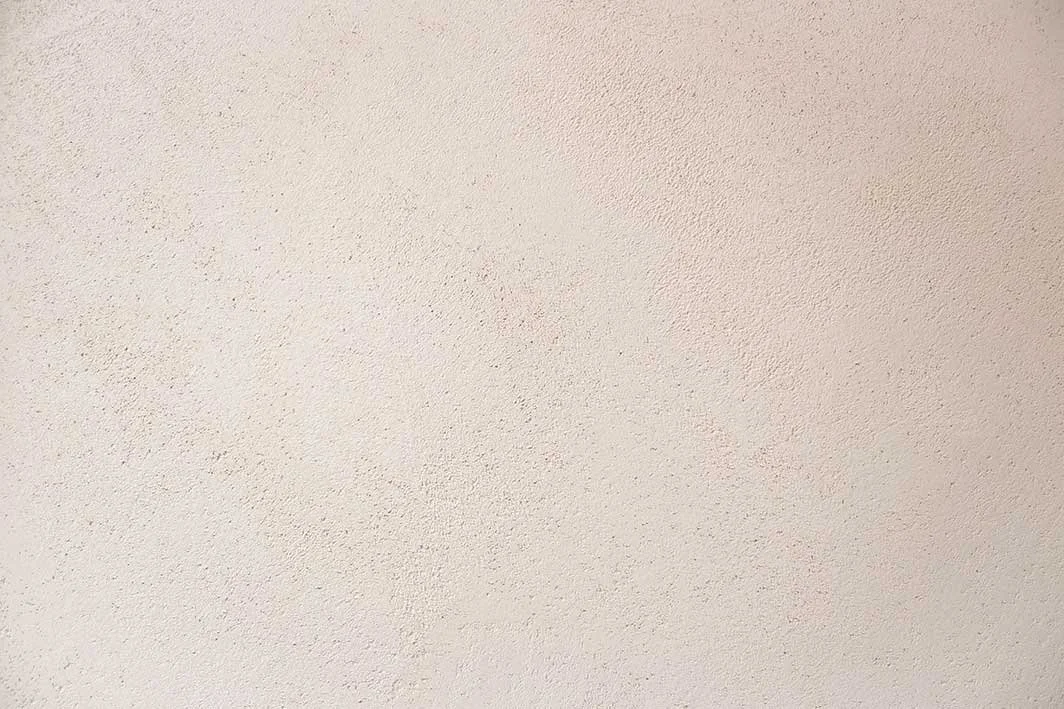
Limestone Plaster

"Natural Nest" painted with Limestone Paint
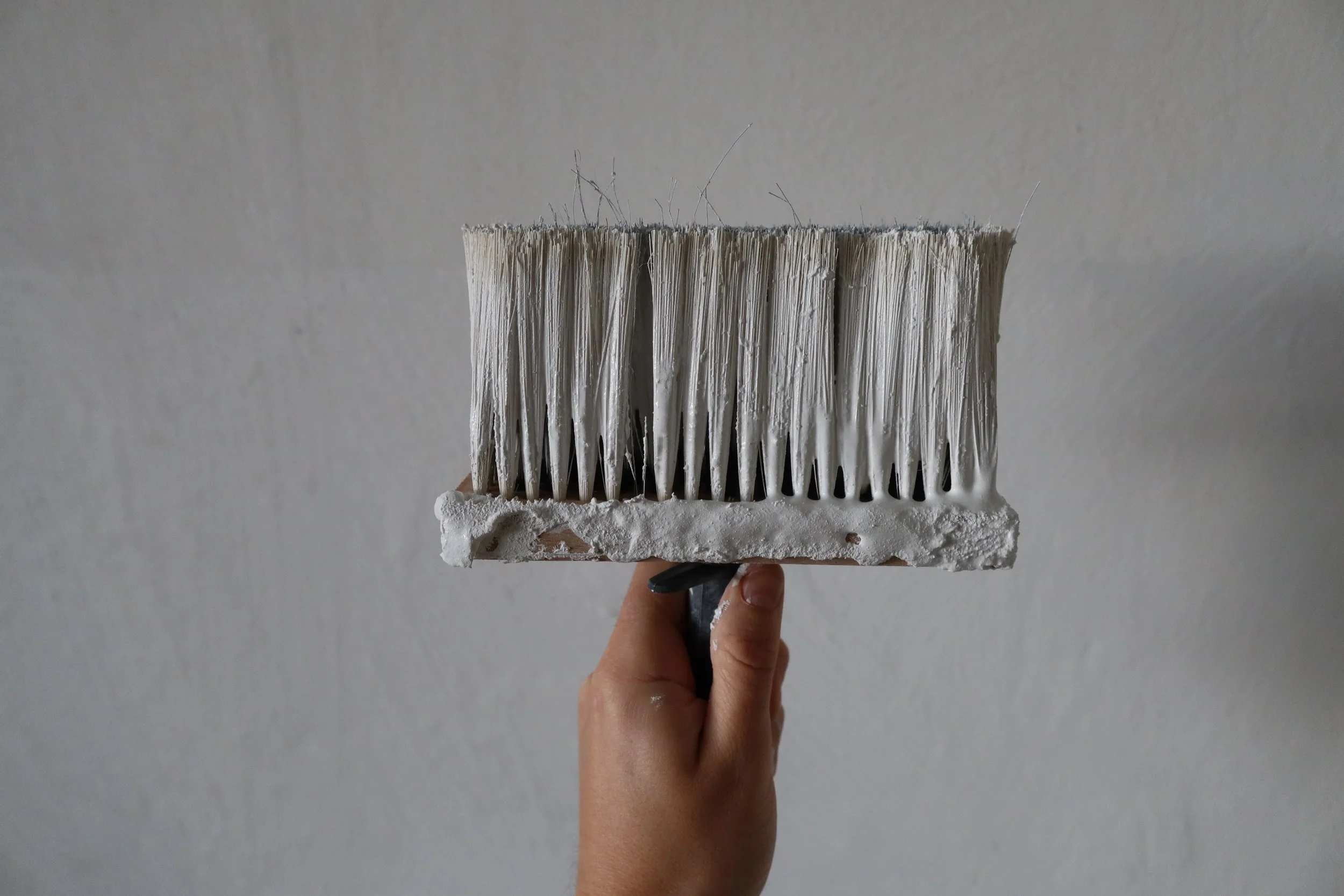
Fine Clay Plaster Paint ("Lehm-Streichputz")
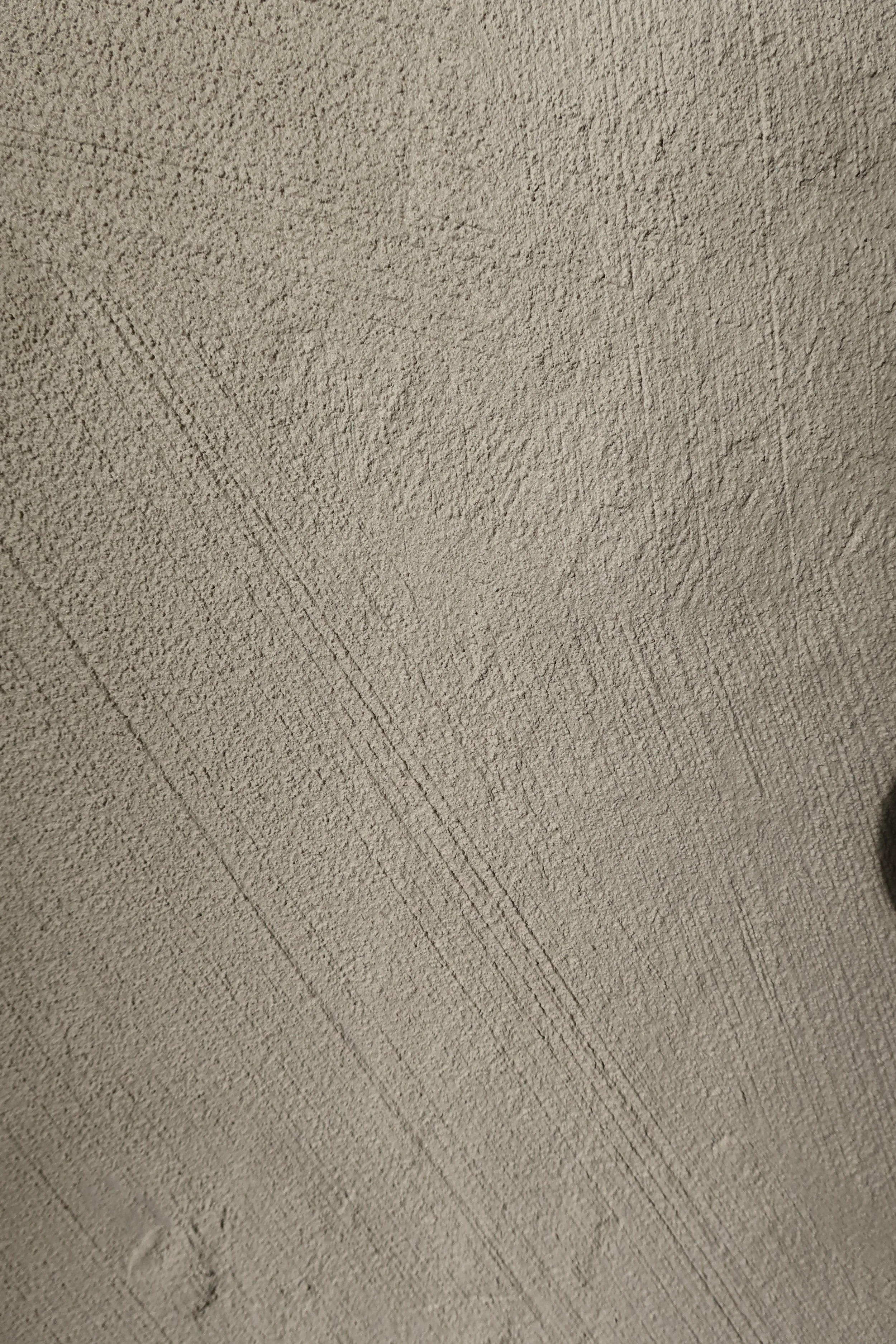
Fine Clay Plaster Paint ("Lehm-Streichputz")
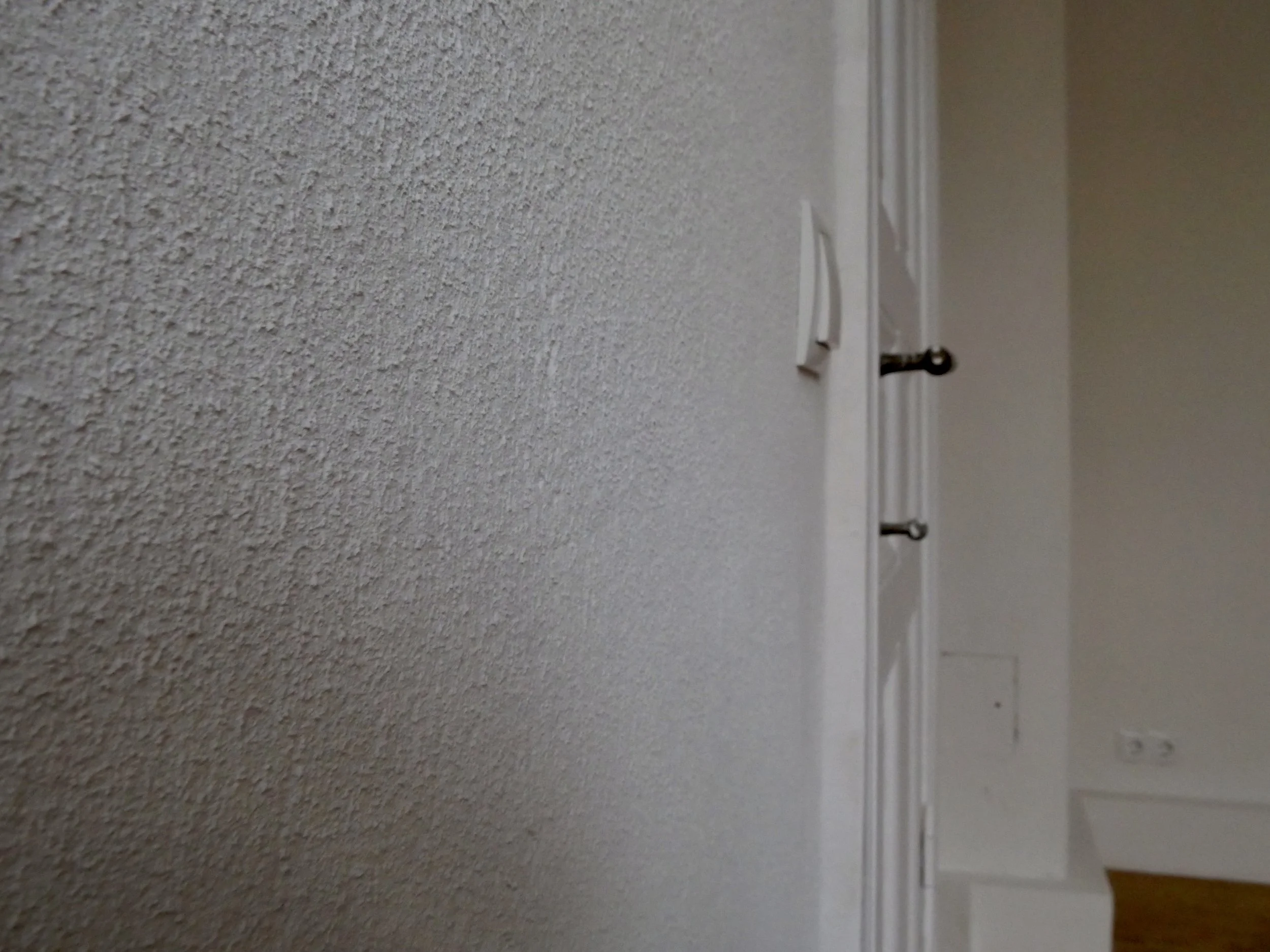
Fine Clay Plaster Paint ("Lehm-Streichputz")

Clay Plaster
Flooring
-
A Timeless, Sustainable, and Healthy Choice
Parquet flooring made from solid wood is a durable, eco-friendly, and aesthetically rich flooring solution that brings warmth and elegance to any space. Sourced from renewable wood, it has a low environmental impact, especially when sourced from responsibly managed forests. Unlike synthetic alternatives, full-wood parquet can be sanded and refinished multiple times, extending its lifespan and reducing waste. Its biodegradability ensures that it leaves minimal ecological footprint at the end of its life cycle.
Beyond its sustainability, parquet flooring contributes to a healthier indoor environment. It is free from harmful chemicals, VOCs, and synthetic adhesives, if it is not treated with chemicals. Wood’s natural ability to regulate humidity helps maintain a comfortable indoor climate, while its antistatic properties reduce the accumulation of dust and allergens, improving air quality. Additionally, wood’s thermal insulation enhances energy efficiency, keeping interiors warm in winter and cool in summer.
On the other hand, most modern parquets are made from two or three layers, with only the top layer made of solid wood. The adhesives used in these multi-layer parquets can sometimes pose health risks due to the chemicals involved. Additionally, some products come pre-finished with wax, which can reduce the wood’s natural breathability.
-
A Natural, Durable, and Sustainable Flooring Choice
Solid wood planks are a classic, eco-friendly flooring option, offering a timeless aesthetic and exceptional durability. Made from single pieces of natural wood, they are a renewable resource with a low environmental impact, especially when sourced from sustainably managed forests. Compared to synthetic flooring, solid wood planks are biodegradable and can be recycled or repurposed, minimizing waste. With proper care, they can last for generations, as they can be sanded and refinished multiple times, extending their lifespan significantly.
Solid wood planks contribute to a healthy indoor environment, as they are free from VOCs and synthetic adhesives, making them a non-toxic, hypoallergenic choice. Their natural moisture-regulating properties help maintain a balanced indoor climate, while their antistatic surface minimizes dust and allergens, improving air quality. Additionally, wood’s thermal insulation enhances energy efficiency, keeping rooms comfortable year-round.
On the downside, the initial investment can be quite high. Additionally, because solid wood planks are typically produced in wide and long dimensions, they often require cutting down old-growth trees—sometimes well over a century old—to obtain the necessary lumber. This raises some concerns about environmental impact.
-
Natural, Sustainable, and Timeless
Terracotta tiles are a warm, durable, and eco-friendly flooring choice made from baked natural clay that is fired in lower temperatures then traditional ceramic tiles., which makes production less energy intense. When bought locally its footprint is the lowest and usually lower than “cheap” ceramic tiles that have longer transportation distances (Spain, Portugal or even Asia).
Terracotta is VOC-free, breathable, and moisture-regulating, reducing mold risks and improving air quality. Its thermal mass enhances energy efficiency, keeping spaces cool in summer and warm in winter. The antistatic surface minimizes dust, making it ideal for allergy sufferers.
On the downside, terracotta need more maintenance over time than ceramic tiles and are usually more expansive.
-
Cork Flooring is produced from the renewable bark of cork oak trees, making it a top choice for resource management and low energy costs in production. Because the cork bark naturally regrows, harvesting it causes minimal environmental impact and helps maintain healthy forests. With its resilient structure, cork flooring can handle everyday wear and tear, translating into long-lasting durability.
When it comes to health and living comfort, cork’s natural properties provide insulation against noise and temperature fluctuations, creating a quieter, more comfortable indoor environment. It’s also free of most harmful substances, making it a beneficial option for individuals seeking health-conscious flooring. However, proper sealing is necessary to protect against moisture and potential staining. Over time, regular maintenance may be needed to preserve its appearance and performance. Despite these critical points, cork flooring remains a sustainable and cozy solution suitable for a variety of interior spaces.
-
Natural Carpet is an eco-friendly flooring choice that’s crafted from renewable fibers like wool, jute, sisal, or seagrass. Its production generally requires less energy compared to synthetic alternatives, and because these materials are biodegradable, they help support responsible resource management. Thanks to their tight, hard-wearing fibers, natural carpets also offer durability, staying beautiful and functional for many years.
In terms of health, natural carpets typically contain fewer harmful substances, making them safer for indoor air quality and overall living comfort. Their natural fibers can help regulate humidity levels by absorbing and releasing moisture, adding a cozy feel to any space. However, it’s worth noting that some natural carpets may require more specialized cleaning and can be prone to stains or damage from excessive moisture. Ensuring regular maintenance and prompt cleaning can help you avoid these issues and enjoy the many benefits of this sustainable, healthy flooring solution.
-
Rammed Earthen Floor is a sustainable flooring method where layers of moist earth, sand, and sometimes stabilizers like clay or lime, are compressed to create a solid, long-lasting surface. This low-impact process employs locally sourced, abundant materials and generally requires less energy to produce than conventional flooring options, making it a standout in resource management.
In terms of health and living comfort, a rammed earthen floor has excellent thermal mass, helping maintain a more stable indoor climate by absorbing and releasing heat slowly. It is also largely free of harmful substances and can contribute to better indoor air quality. However, to ensure durability and protection against moisture damage, rammed earth floors typically need sealing and may require periodic maintenance. Additionally, certain climates or building conditions might pose challenges, so consulting a knowledgeable contractor can help you address any critical points and enjoy the many benefits of this natural, eco-friendly flooring option.
-
Clay Screed is a natural flooring option created by mixing clay, sand, and sometimes fibers or binders, then applying and smoothing the blend onto a suitable subfloor. This process often uses locally sourced, abundant materials, making it a champion of resource management and relatively low-energy to produce compared to conventional flooring methods. Its dense composition can offer long-lasting durability when properly installed and sealed.
From a health and living comfort perspective, clay screed excels at moisture regulation, helping maintain a balanced indoor climate. It is largely free of harmful substances and can contribute to healthier air quality. However, to prevent damage from moisture or heavy traffic, clay screed typically requires regular sealing or maintenance. Additionally, proper installation is crucial, as an uneven or rushed application may lead to cracks or reduced lifespan. Overall, clay screed provides an eco-friendly, comfortable, and aesthetically appealing floor solution, provided you address these critical points during planning and upkeep.

Rammed Earthen Floor

Clay Screed
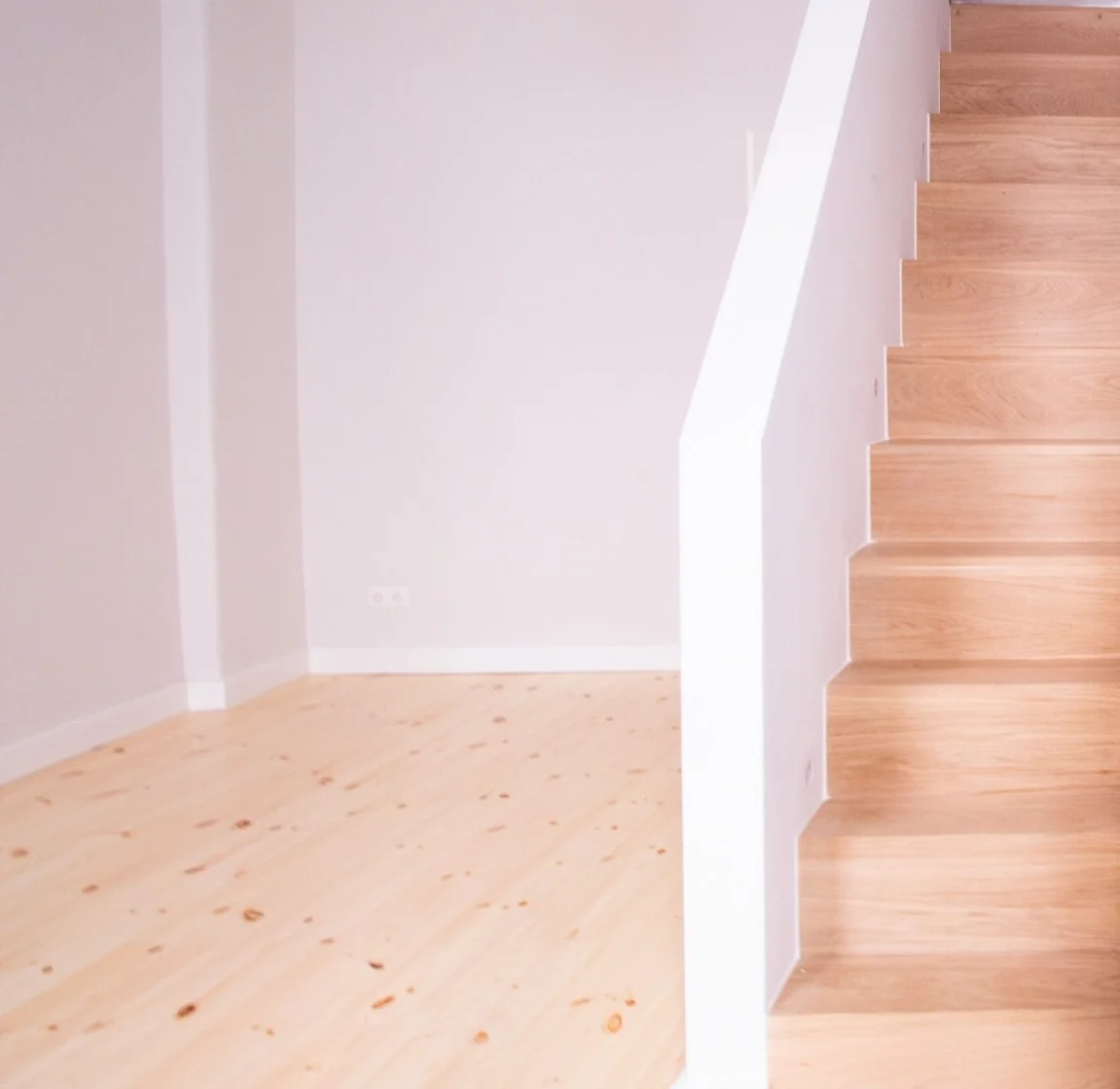
Wood Planks (Pine) in our "Natural Nest"

Parquet flooring
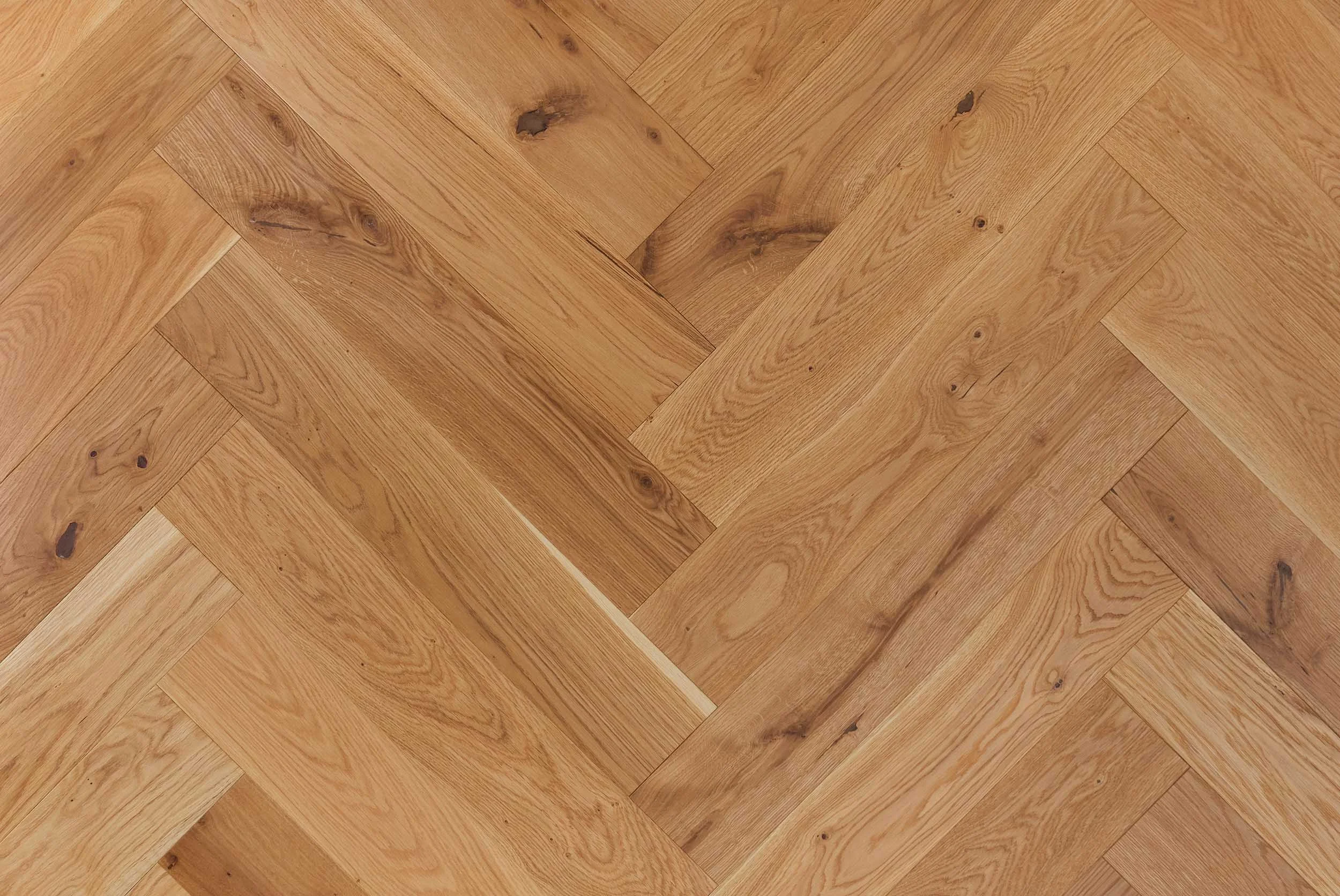
Parquet flooring (herringbone)
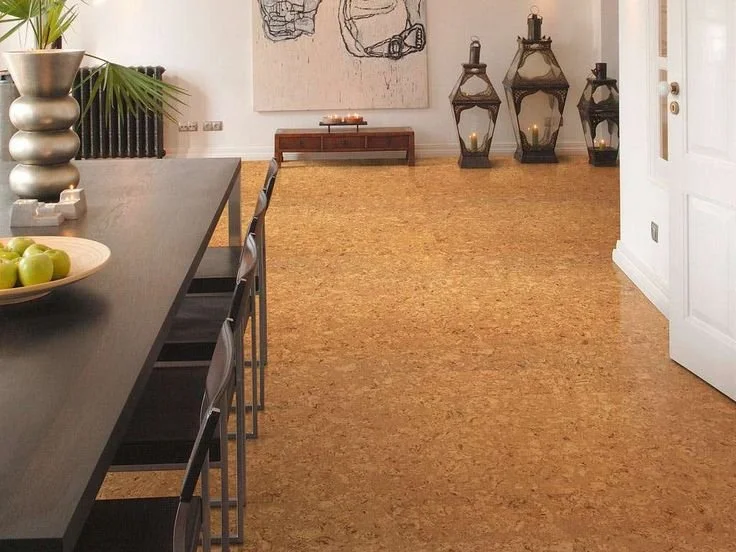
Cork Floor in Living Room

Natural Carpet (Sisal)

Terracotta Clay Tile from brand "karak"
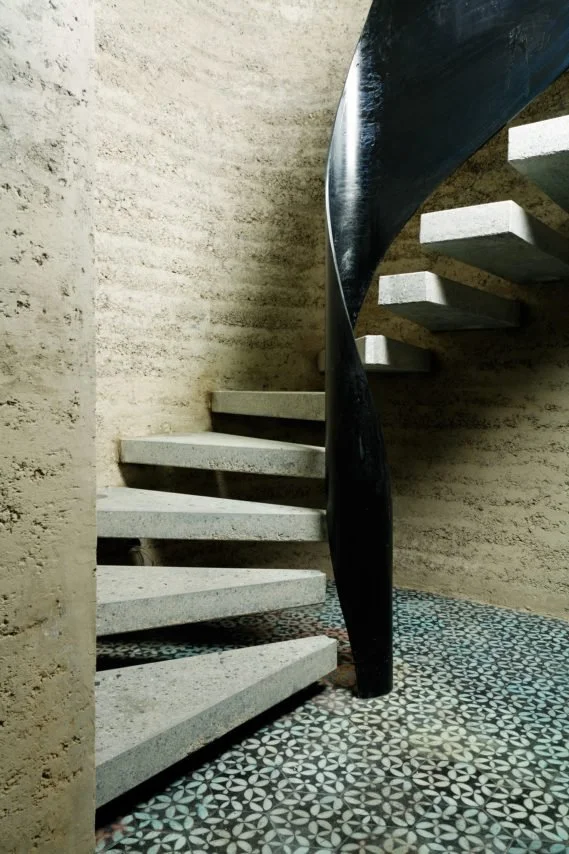
Terracotta Clay Tile from brand "karak"
Interieur Walls
-
Clay Building Panels are an eco-friendly construction solution made by combining natural clay with reinforcing materials or fibers (like straw). Because clay is abundant and often sourced locally, these panels have low energy costs in production and minimize the carbon footprint. Properly installed, clay panels offer durability and can help regulate indoor temperatures thanks to their thermal mass.
When it comes to health and living comfort, clay building panels are generally free of harmful substances, supporting healthy indoor air quality. They also naturally absorb and release moisture, helping maintain a balanced indoor climate. However, it’s crucial to protect them from excessive moisture.
Furthermore, there are harder to install than conventional drywall materials, such as gypsum panels because of their heavy weight. -
Straw Building Boards (for Drywall) are a lightweight, eco-friendly alternative to conventional drywall, made by compressing natural straw fibers and binders (such as limestone) into sturdy panels. These boards are suitable for interior walls and partition systems, providing good thermal and acoustic insulation while supporting energy-efficient building designs. Because straw is rapidly renewable and often an agricultural byproduct, its use helps reduce waste and minimize the carbon footprint of construction.
By avoiding harsh chemicals and relying on natural binders (such as limestone), Straw Building Boards are healthy indoor environment with low VOC emissions. Their structural integrity and moisture tolerance can be enhanced with proper treatments, offering durability comparable to traditional drywall. However, availability may vary, and cost can be higher in certain regions compared to standard gypsum boards.
-
Wood Fiber Boards are a versatile and cost-effective building material commonly used in furniture production, insulation, and interior walls. They are created by compressing wood fibers and binders. When sourced from renewable forests or recycled wood, they help to conserve resources and reduce waste. Thanks to their natural composition, Wood Fiber Boards can offer excellent thermal and acoustic insulation, making indoor spaces more comfortable and energy-efficient.
Most Wood Fiber Boards are low in harmful substances, if natural binders are used, contributing to a healthier living environment. However, binders or adhesives containing formaldehyde or other chemicals may be used in some products, so choosing certified, low-emission boards is crucial to minimize potential risks. In terms of sustainability, Wood Fiber Boards generally have a moderate energy requirement during production.
On the critical side, moisture resistance can be a concern—especially in high-humidity areas—unless specific treatments or coatings are applied.
-
Hemp Fiberboards are an innovative and eco-friendly alternative to traditional wood-based boards, offering remarkable strength and durability for a wide range of applications, from furniture to interior wall panels. Thanks to hemp’s rapid growth cycle and minimal resource requirements, production demands less energy and yields lower carbon emissions, making these boards a very sustainable choice. Hemp fiberboards use typically limestone as a natural binder, so there are no harmful chemicals used, promoting a healthier indoor environment with reduced allergens and better air quality. Additionally, hemp fiberboards exhibit excellent insulation properties, energy efficiency in buildings.
On the critical side, availability and cost can sometimes be higher compared to conventional materials. However, recently some companies are trying to bring this material to the mainstream and bring prices down, such as von Hanf (www.vonhanf.de).
-
Clay Bricks/Adobe have been used for centuries as a robust, natural building solution for walls, floors, and structural elements. Made from earth and clay—often with minimal additives—this material stores heat efficiently, helping maintain comfortable indoor temperatures and potentially reducing energy costs. When locally sourced, clay bricks can significantly lower transportation impacts, making them a sustainable choice in eco-conscious construction.
Because they’re derived from naturally occurring materials, clay bricks are generally free of harmful chemicals, contributing to a healthy living environment with good humidity regulation. Durability is also a strong point: fired clay bricks can last for generations with minimal upkeep. However, energy consumption during the firing process can be relatively high, and adobe (unfired) variants often rely on specific climatic conditions to achieve optimal strength and stability.
-
Hemp Bricks are an innovative, bio-based construction material typically composed of hemp hurd, lime, and water, yielding lightweight, strong, and well-insulating blocks. They are often employed for non-load-bearing walls and thermal insulation, offering excellent temperature regulation and potentially reducing heating and cooling costs. Because hemp grows quickly and requires minimal resources, the overall environmental footprint of Hemp Bricks is relatively low, and carbon capture during the plant’s growth further supports sustainability goals.
Moreover, the natural composition of Hemp Bricks generally avoids toxic binders, resulting in a healthy indoor environment with reduced chemical emissions. Hemp’s moisture-handling capabilities also help maintain comfortable humidity levels and limit mold growth.
On the critical side, initial costs and availability may be higher than more conventional materials, and structural strength might necessitate supplementary support in certain building applications. -
Rammed Earth (walls) are a time-tested, natural building technique that involves compressing layers of damp earth in a form to create solid, beautiful and thermal mass walls.
This method can utilize locally sourced materials, which not only reduces transportation impacts but also minimizes overall resource consumption. The thick walls offer excellent insulation and temperature regulation, helping maintain a comfortable indoor climate and potentially lowering energy costs.Because Rammed Earth construction typically involves few or no additives, it contributes to a healthy living environment.
Additionally, these walls can be highly durable, with some historical examples lasting for centuries.
However, the process of building the walls are very intense and need a lot of manpower or special tools, that are not widely available yet.
Also, if cement stabilizers are used, the environmental impact increases drastically.
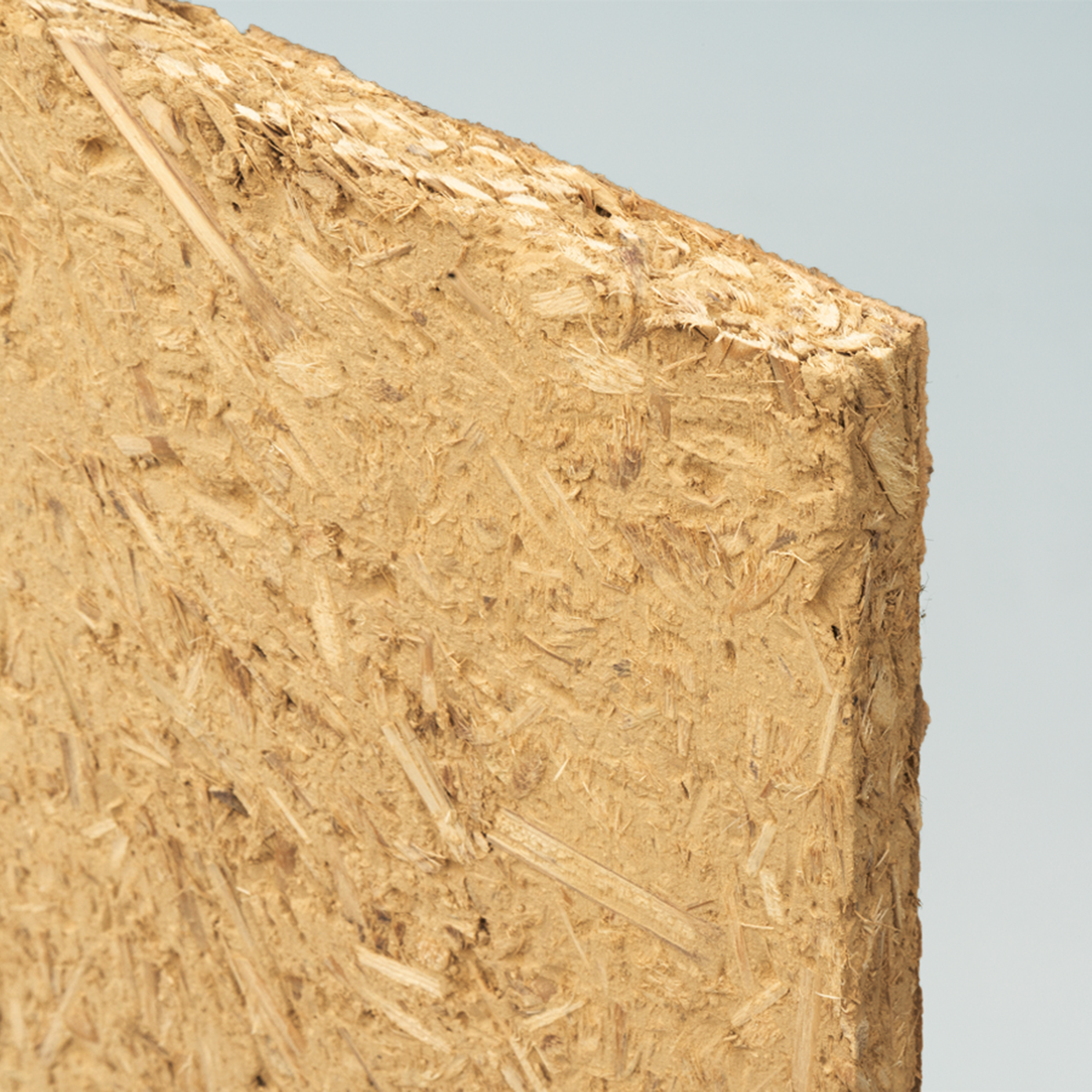
Clay Panel from "Claytec"

Straw building panel by "vonHanf"
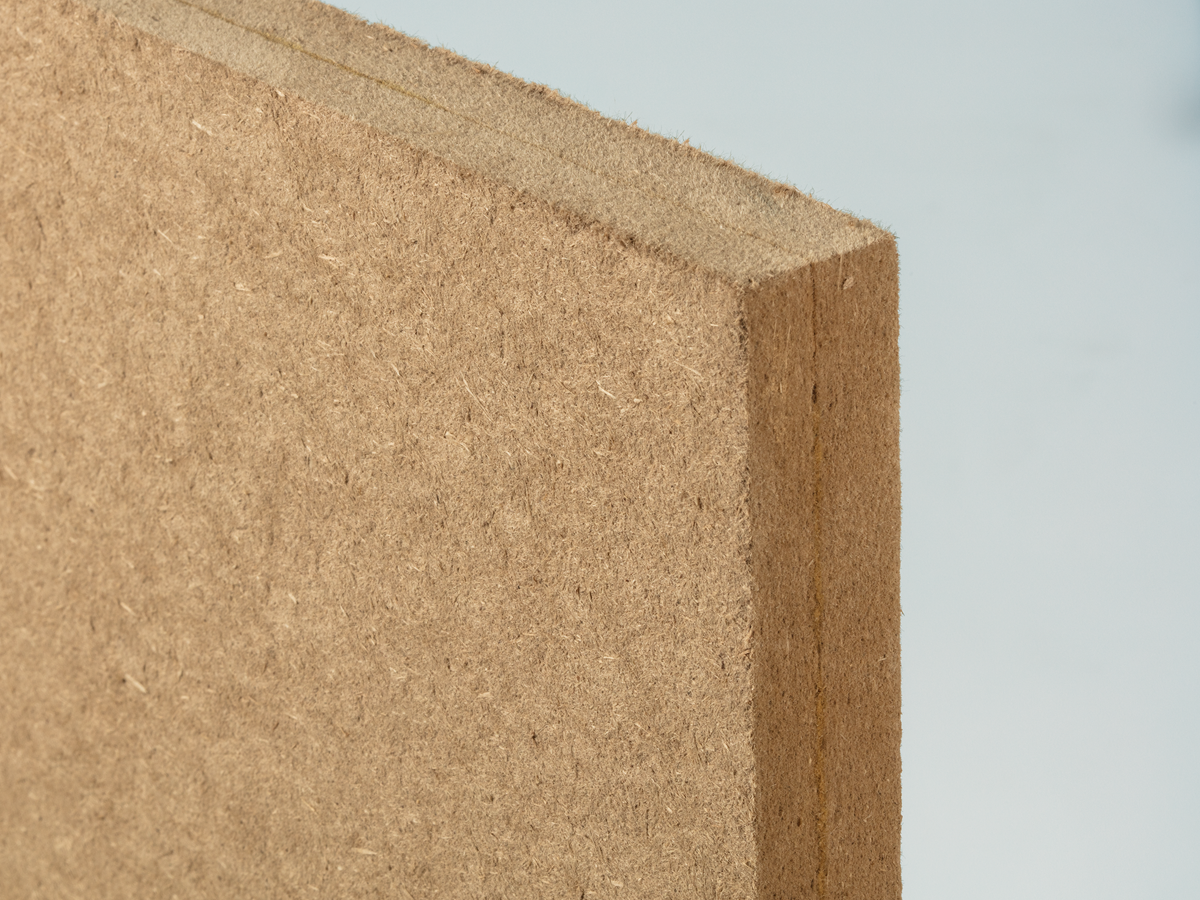
Wood Panel by "Claytec"
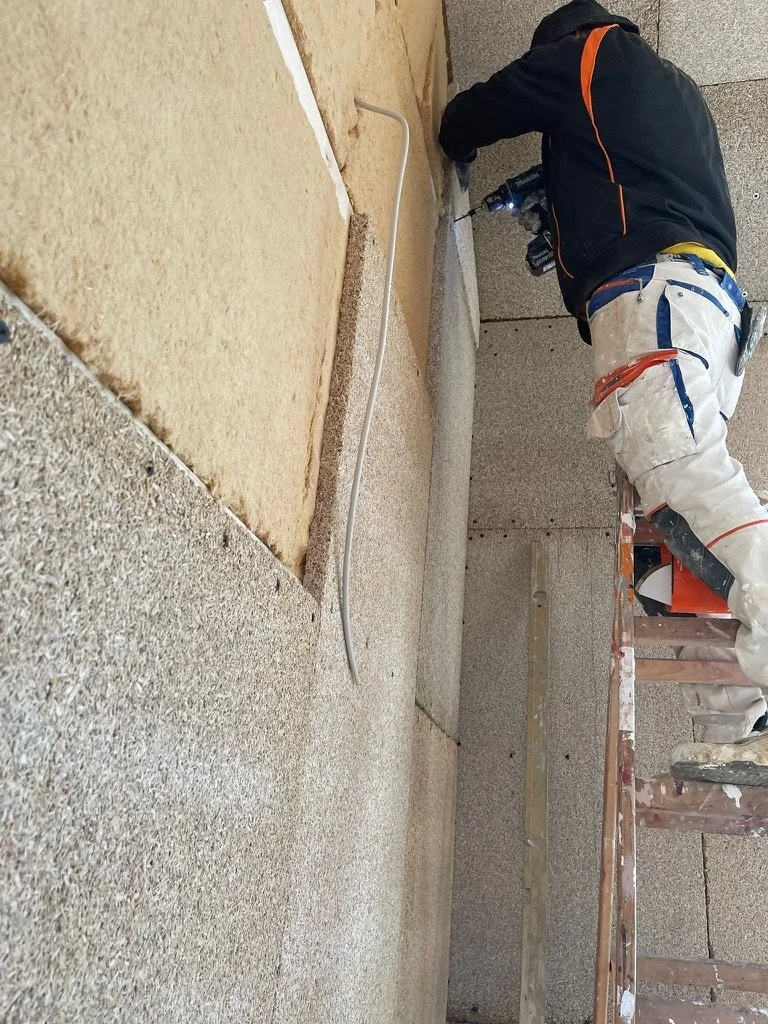
Hemp Building Panel by "vonHanf"
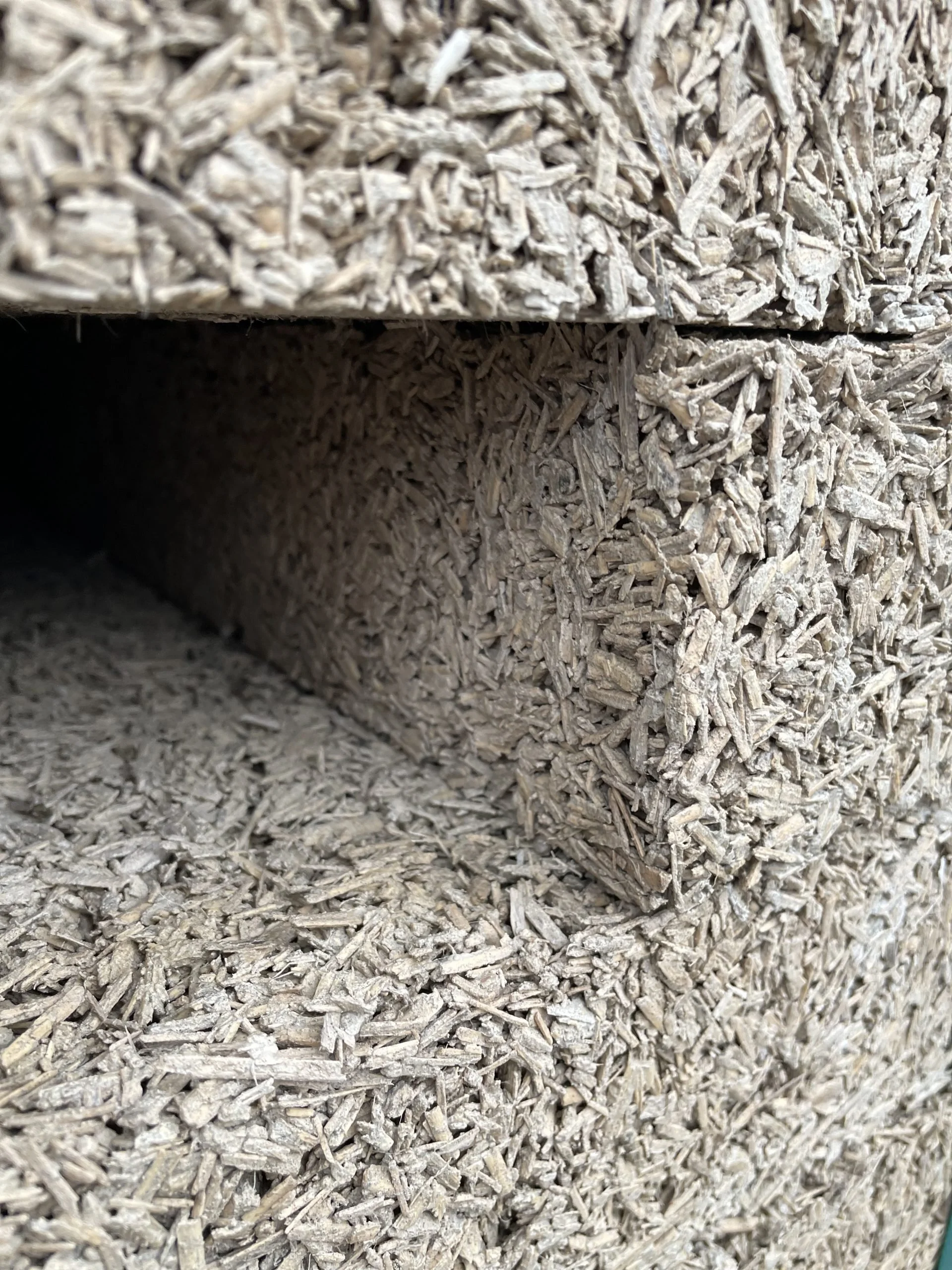
Hemp Brick by "von Hanf"

Hemp Bricks by "von Hanf"
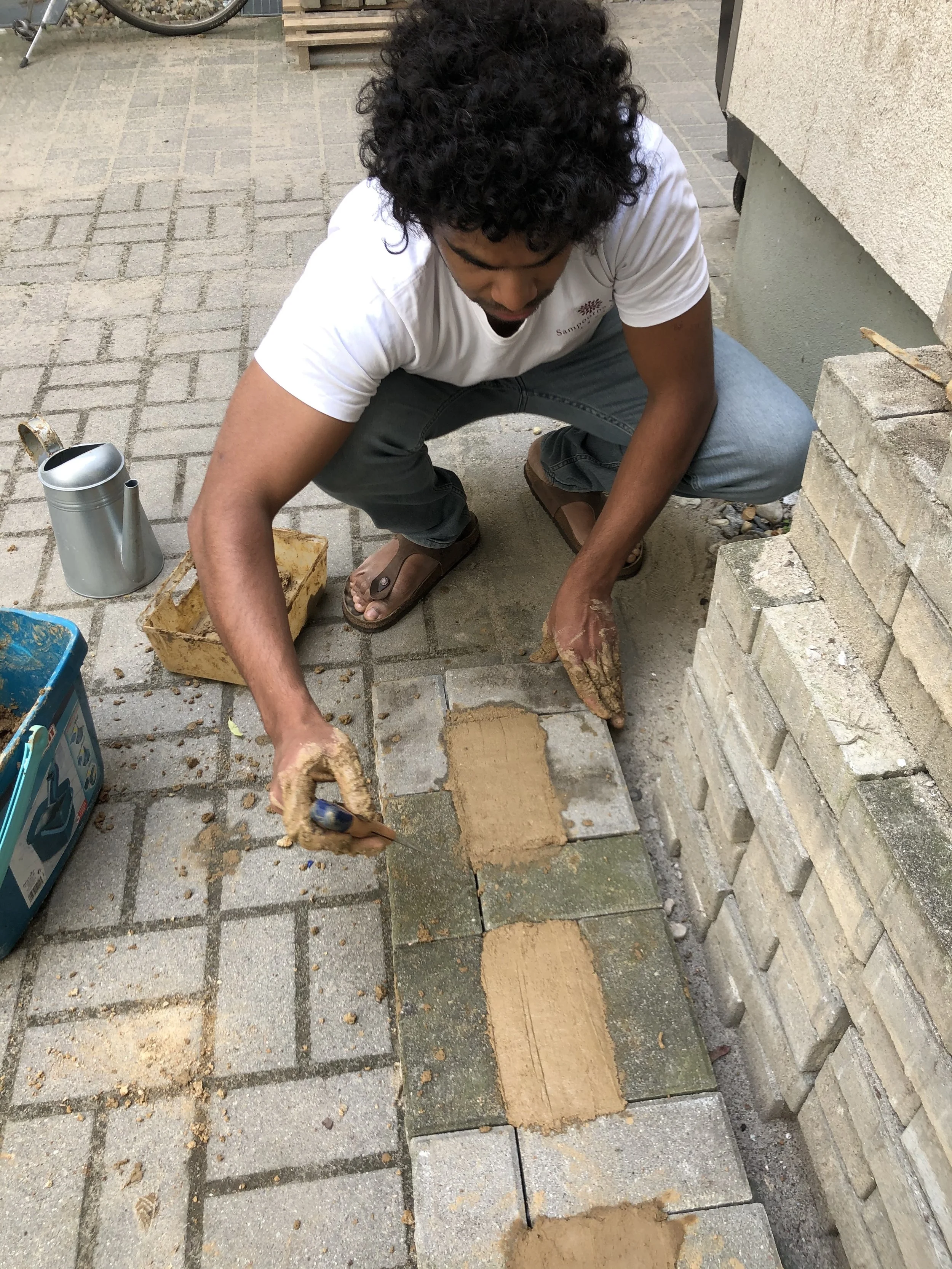
Joel making Adobe (Clay) bricks
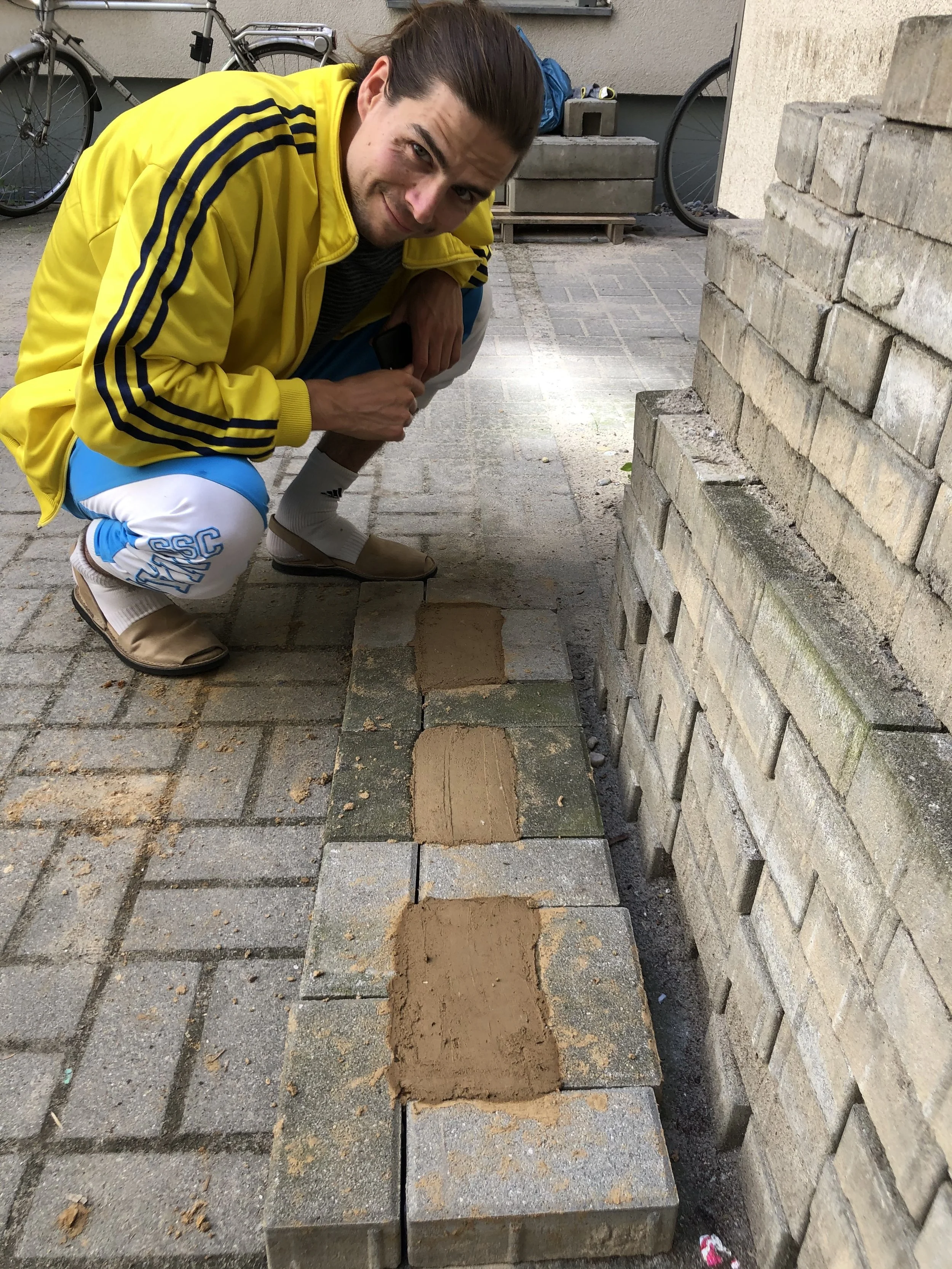
Adobe (Clay) bricks drying

rammed earth wall
Insulation
-
Description coming soon
-
Description coming soon
-
Description coming soon
-
Description coming soon
-
Description coming soon
-
Description coming soon
-
Description coming soon

Hemp Filling in our "Natural Nest"
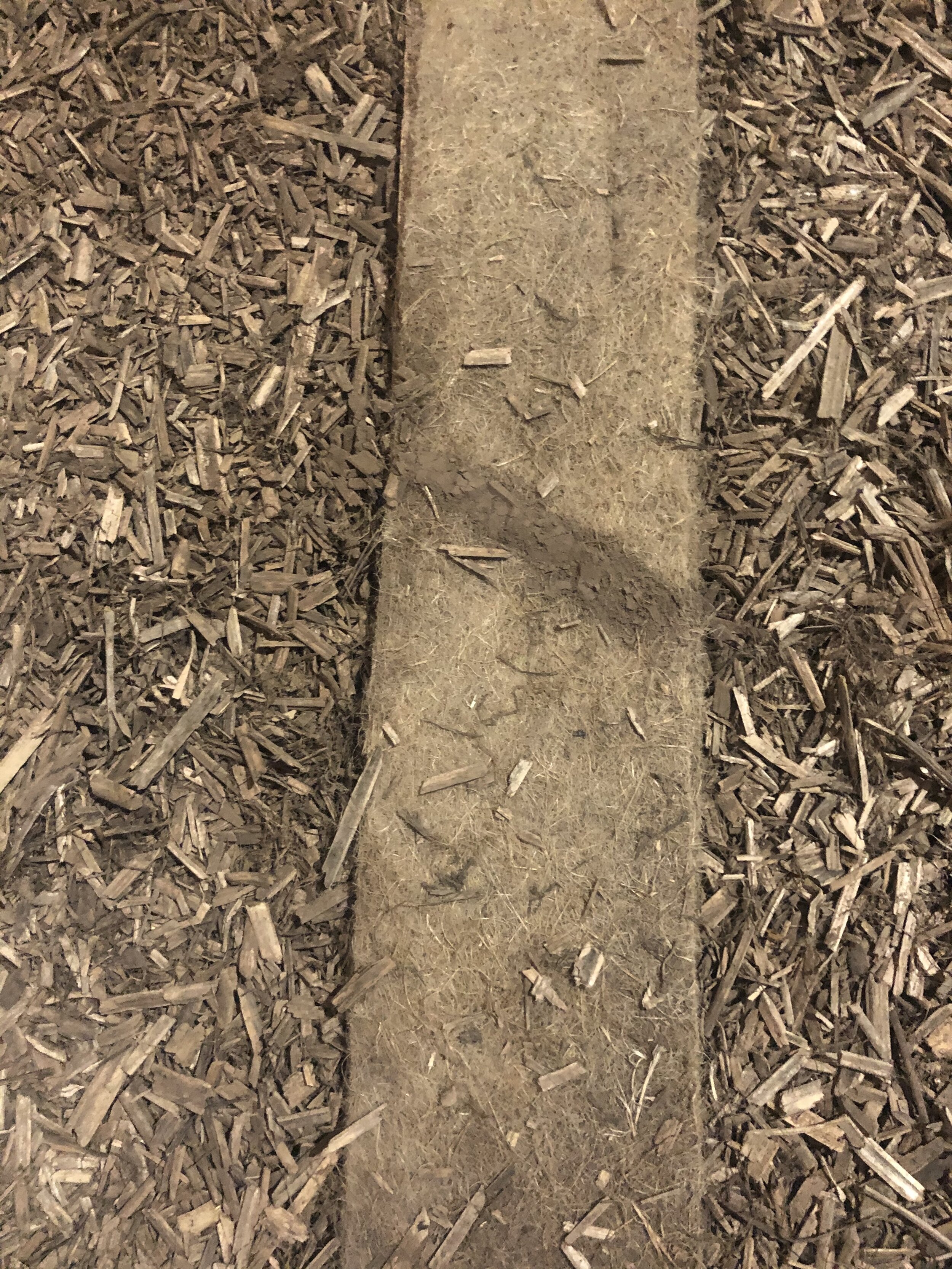
A cement step with wood chips on the surface, surrounded by hemp insulation
